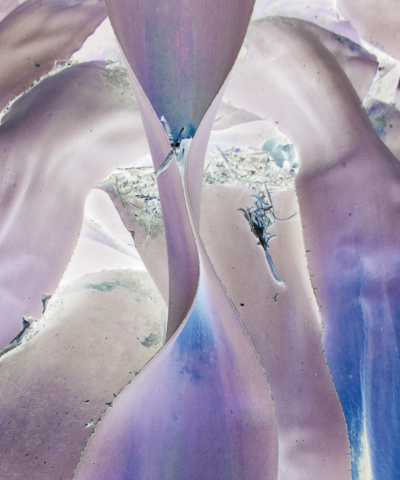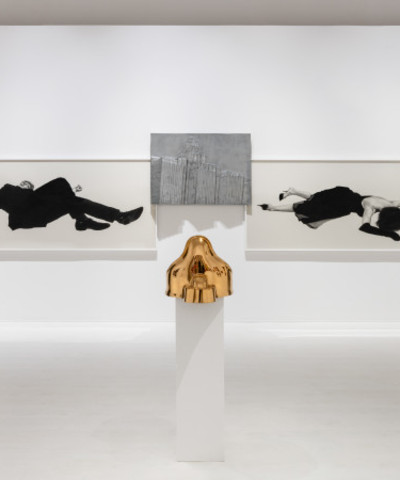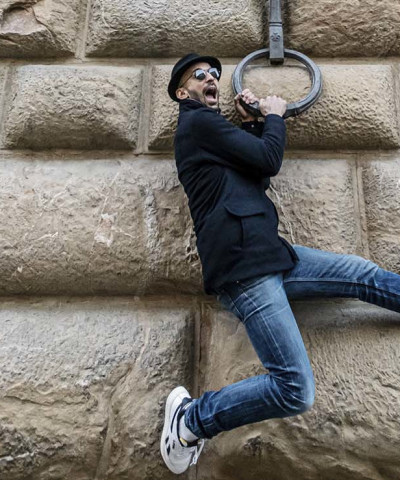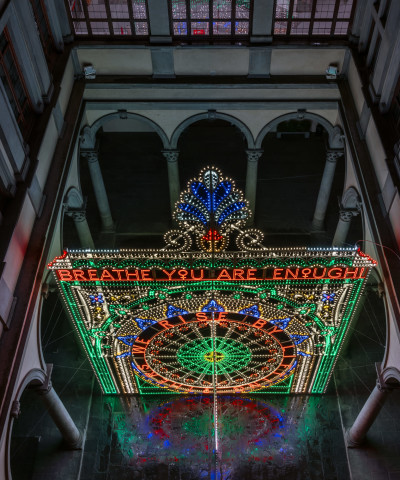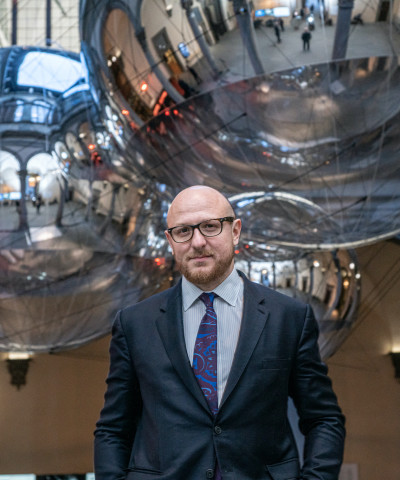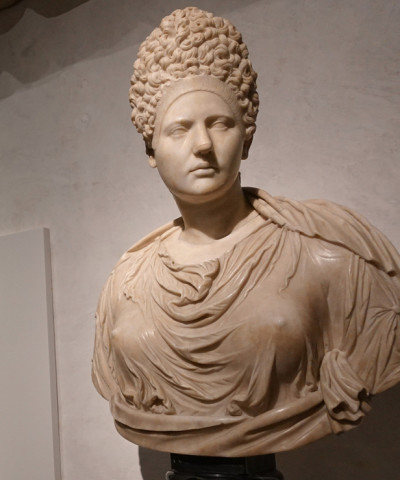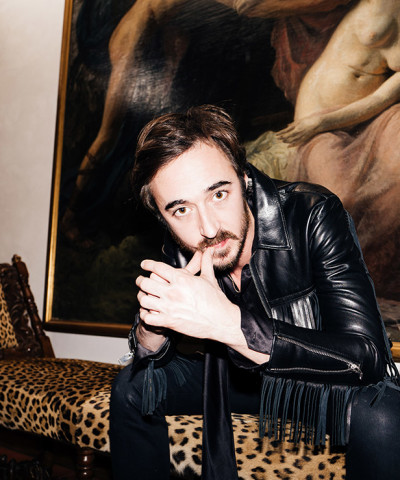Arturo Galansino presents Jeff Koons. Shine
The director of Palazzo Strozzi tells about the new exhibition of the American artist
With Jeff Koons. Shine, Palazzo Strozzi continues the series of exhibitions devoted to the world’s greatest contemporary artists. The exhibition explores the concept of reflective surfaces and brilliance behind the American artist’s works: the idea of ‘shine’ is, in fact, a key principle of his sculptures and installations which aim to question our relationship with reality, as well as the notion of work of art itself. For Koons, this concept goes beyond the mere idea of decorating and beautifying, and becomes the very material of his art.
 Jeff Koons portrait
Jeff Koons portraitBecause of their reflecting power, the works play with our metaphysical perception of time and space, of surface and depth, of materiality and immateriality. The works on show reveal the artist’s consistency in pursuing his vision and the formal, technical and stylistic qualities that Koons developed over his forty-year career around themes such as the refusal of the hierarchization of images, the dialogue with cultural history, self-acceptance and the acceptance of all aesthetic points of view, the viewers’ participation, spirituality and transcendence.
Koons’ personal life plays a very important role in his art. Born in 1955 in Pennsylvania in a middle-class family, Koons first ventured into painting by copying famous works showcased at his father’s interior design shop. Following his studies in Baltimora and Chicago, Koons moved to New York in 1977 and created his first “readymade”, which mixed Duchamp and Warhol by using mirrors and typical American everyday objects. Then the readymade phase evolved into the transformation of everyday objects into big, usually shiny versions of their former selves in various materials: a constant in the artist’s practice since the mid-1980s.
 Balloon Monkey - Jeff Koons
Balloon Monkey - Jeff Koons And so, Koons went from the plastic bunny of the first Inflatables series to the Statuary series, to the reflective Rabbit (1986) in stainless steel, the quintessential middle-class material. A rabbit worth over $91 million- the most expensive work sold by a living artist- one of the most iconic sculptures of the mid-1900s, of which it embodies the contradictions and drives. With the Statuary series, Koons plays with the distinction between ‘high’ and ‘low’ art, whose highly polished surface evokes abstraction and eroticism at the same time. Refusing to create elitist artwork, Koons uses reassuring and familiar images to correct the negative judgement passed on popular taste: a process of democratization pursued through steel.
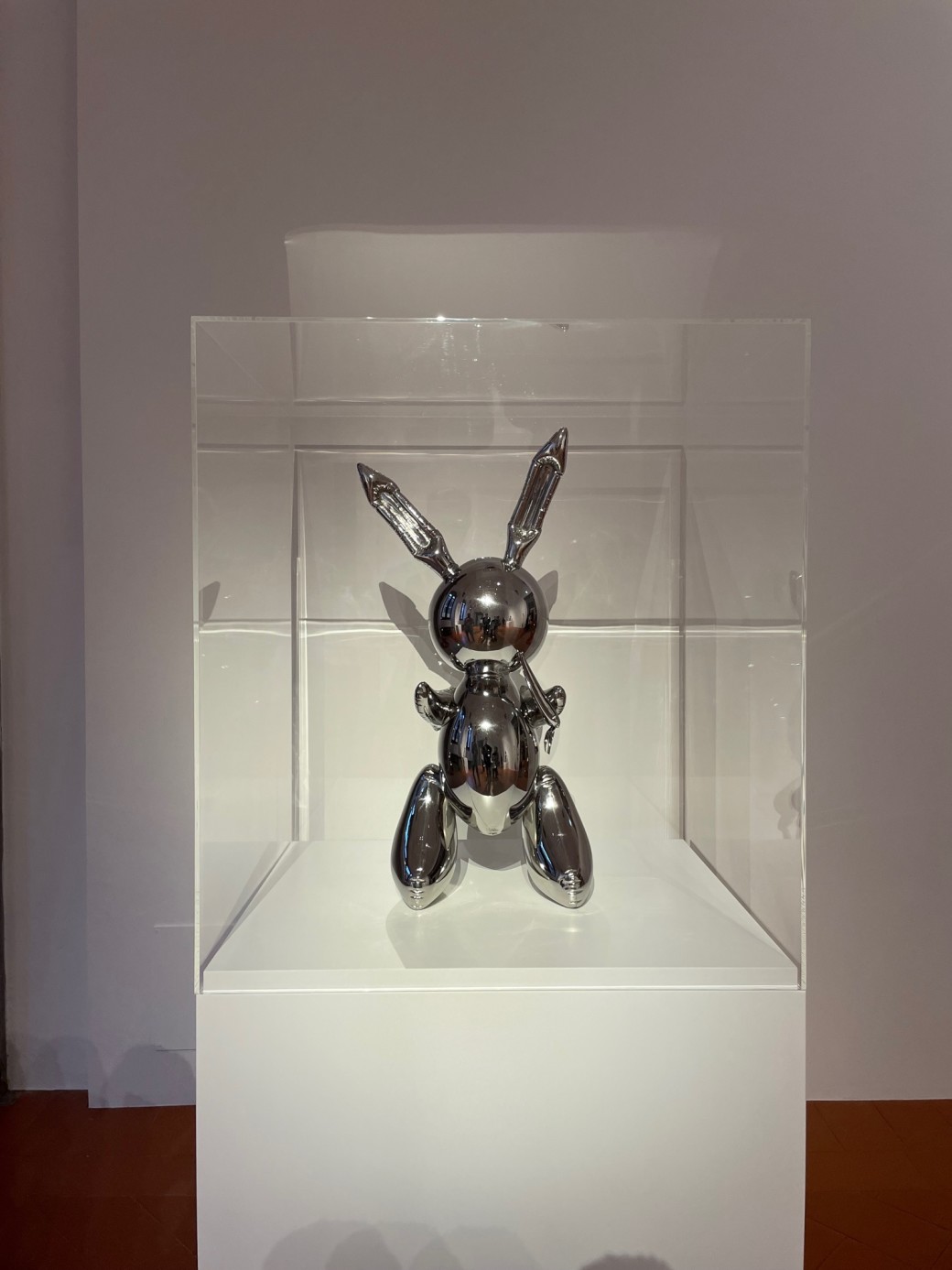 Rabbit - Jeff Koons
Rabbit - Jeff Koons Freeing oneself from guilt is a sort of mantra for the artist: getting rid of the middle class’s sense of shame for its aesthetic tastes and, with the shocking Made in Heaven series, eliminating the feelings of guilt associated with sexuality. The monumental and colorful Celebration series revolves around the important anniversaries that mark childhood and family life. Behind these colossal and very colorful stainless steel sculptures lies a world of joyful experiences, typical of Western consumer society. The material is what transfigures the works and misleads the viewer, because what appears to be very light is, in reality, very heavy. This series, in fact, marks the beginning of the artist’s ‘baroque’ phase, which features technical miracles, such as very heavy metal sculptures in the shape of light-weight inflatable life-belts, as the metaphor for human life, since they contain breath, such as Dolphin and Lobster.
 Lobster - Jeff Koons
Lobster - Jeff Koons  Hulk - Jeff Koons
Hulk - Jeff Koons  Balloon Dog (Red) - Jeff Koons
Balloon Dog (Red) - Jeff Koons The references to antiquity, mythology and classical culture become more and more explicit in Koons’ Antiquity series, with which he combines the past and the present, and in the Gazing Ball series, featuring ‘replicas’ of iconic works in the history of Western art. The level of meticulous care that goes into the execution of his works is evident in the sculptures and paintings, as well as in the gazing balls - an ornament typical of suburban American gardens - hand-blown, bright blue glass balls contrasting with the white plaster casts and the paintings’ colors and which reflect the viewer’s own image back within a long cultural history.
 Gazing Ball (Rubens Tiger Hunt), 2015 (ph. Tom Powel Imaging, courtesy Gagosian)
Gazing Ball (Rubens Tiger Hunt), 2015 (ph. Tom Powel Imaging, courtesy Gagosian)Jeff Koons, a record-breaking artist, is usually described in superlative terms: the greatest, the most important, the most influential, the most famous, the most subversive, the most controversial, the most expensive, the richest, the most criticized… we trust that the Palazzo Strozzi exhibition, by exploring his works inside and out, will contribute to adding new adjectives to the list, by reminding the audience that Koons worked to make art more inclusive, more open, more democratic, more spiritual.










